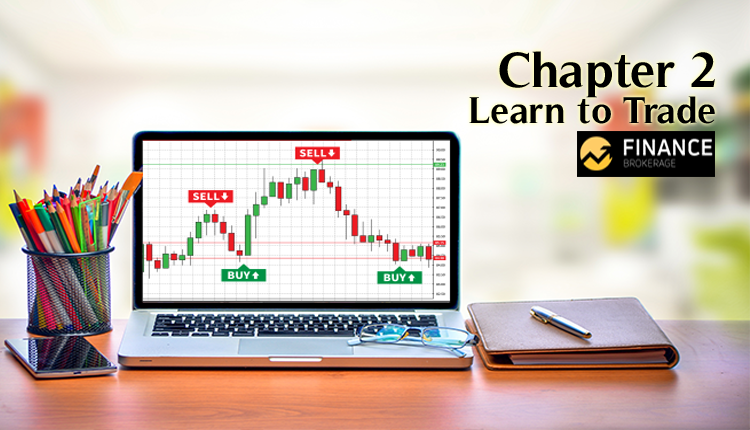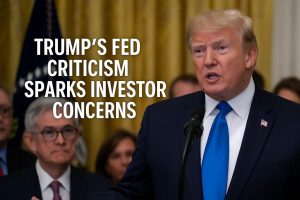
Learn to Trade
Chapter 2
In this chapter, we’ll help you learn how to trade currency. This contains all about the forex market, and the terms you need to know in order to better understand forex trading.
What are Pips?
This is probably the first time you heard this word. And that’s going to change from this point on.
The Price Interest Point, or simply pip, is the price move in a given exchange rate. Knowing the change in value helps traders to enter or edit orders to manage their trading strategy.
If EUR/USD moves from 1.6350 to 1.6351, then that means the USD rise in value is one pip.
Remember, a pip is the last decimal place of a quotation.
Majority of pairs are up to 4 decimal places. But there are some exceptions like the Japanese yen as it only go to 2 decimal places.
What are Pipettes?
Not this kind of pipette.
Some brokers quote currency pairs beyond the standard 4 and 2 decimal places. Instead, they quote 5 and 3 decimal places.
These are called pipettes, or Fractional Pips.
If the GBP/USD moves from 1.41498 to 1.41499, the 0.00001 move is higher one pipette.
What’s the point of pips?
The value of the pips of your trade can differ depending on your lot size. A lot refers the smallest available trade size that you place when trading in the forex market. We’ll talk more about lots later.
Going back, when your trade is positive in pips, you’re making a profit. But when it’s negative, your trade is a loss. This is why traders often use pips to reference gains or losses.
Furthermore, the effect of a single pip has on the dollar amount depends on the amount of euros purchased. If, for example, a pip was 10 basis points, a one pip change would cause greater volatility in currency values.
For instance, we have a USD/EUR with a quote of 1.2326. If a trader buys 10,000 euros with US dollars, the price paid will be $8,112.93.
“Where did $8,112.93 came from?”
Not to worry. We’ll show you how! Remember, it is usually $0.0001 for US-dollar related currency pairs, which is referred to as 1/100th of 1%, or 1 basis point.
([1/1.2326] x 10,000) = $8,112.93
Got it? Good.
Now let’s try an example in determining if your trade is a profit or loss.
The monetary value of each pip depends on three aspects. These are the currency pair being traded, the size of the trade, and the exchange rate. Based on these aspects, the fluctuation of even a single pip can have a huge effect on the value of the open position as similarly mentioned above.
Let’s say you traded a $300,000 involving the EUR/USD pair. It’s closed at 1.2558 after gaining 20 pips.
Find the number of quote currency (USD) each pip represents. Multiply the amount of the trade by 1 pip.
300,000 x 0.0001 = 30 USD per pip
Next, find the base currency (EUR) per pip. Divide the number of USD per pip by the closing exchange rate to get the number of EUR per pip.
30/1.2258 = 24.47 EUR per pip
Now look for the total profit or loss. Multiply the number of pips gained by the value of each pip in EUR to reach at the total loss or profit for the trade.
20 (pips gained) x 24.47 = $489.4 profit.
Of course you wouldn’t need to do this and calculate all the pips by yourself. Your broker can do this for you or websites the offer pip calculators. But it’s a good idea to have good bit of knowledge about this.
What are lots in Forex?
Lots are basically the number of currency units you will buy or sell. There are different sizes for lots. The standard size for a lot is 100,000 units of currency. The mini size is 10,000, the micro is 1,000, and the nano is 100 units.
If you chose standard size lot, you buy 100,000 of the base currency, while selling the equivalent number of units of the counter currency. When the ask price of EUR/USD is 1.2500, 100,000 euros are bought, while 125,000 dollars are sold.
The larger the unit size, the fewer pips you need to make a profit or take a loss.
Here’s an example to understand this better.
A standard EUR/USD pip is 0.0001
You gain 1 pip when buying $100,000 EUR/USD at 1.23000 and selling at 1.23001
(0.0001/1.23000) x 100,000 = $8.10 per pip x 1 pip = $8.10 profit.
Next, you gain 10 pips when buying $10,000 EUR/USD at 1.23000 and selling it a 1.23010
(0.0001/1.23000) x 10,000 = 81 cents per pip x 10 pips = $8.10 profit.
You can see how this works in which both trades earned the same profit.
What is Leverage?
Leverage is one of the reasons why many people are attracted to trading. It allows you to trade without putting up the full amount. That means you can open orders that can go up to 1,000 times more than your own capital. How awesome is that?!
Let’s explain this further.
In fx trading, what you watch for currency movements are the pips. But these movements are just fragments of a cent. For instance, a forex currency like the EUR/USD moves 100 pips from 1.6700 to 1.6800 is just a 1 cent move of the exchange rate.
This is the reason why transactions should be in large amounts. Hence, the lots.
With a leveraged position, you can magnify the potential gains from any price movements. But losses are also magnified by the same degree.
Now let’s apply leverage in real-life situations.
Let’s say you want to control a $100,000 position. Your broker will set aside $1,000 from your account. Your leverage is now 100:1.
You’re now in control of a $100,000 position with only $1,000.
Other leverages available are 50:1, 100:1, 200:1 or even higher.
What is Margin?
Margin is the $1,000 deposit you had to give to use leverage from the example above. It’s a good faith deposit that a trader puts up for collateral to hold open a position. It’s also a portion of your account equity set aside and allocated as a margin deposit.
Take note: The amount of margin needed to hold open a position will ultimately be determined by trade size. If your trade size increases, your margin requirement will increase as well.
But what if the market moves against you, and resulted in losses such that you lack a sufficient amount of margin? This is where Margin Call comes in. A forex broker closes you positions and limits the losses.
This helps the account from becoming a negative balance.
Leverage: Double-edged Sword
Using leverages the wrong way can have serious effects on your account. Be wary that trading large lot sizes through leverage can ratchet up your profits, but can also lead to larger losses when trades go bad. The greater the amount of leverage on capital, the higher the risk you will assume.
To avoid such a disaster, you have to implement a strict trading style that includes the use of stop orders and limit orders.
This brings us to:
Stop Order and Limit Order
If you don’t have the time or energy to monitor the price of your currency pairs, then you can place a limit order or a stop order with your broker.
Let’s discuss about these orders in the simplest way possible.
Market order
A market order is to buy or sell at the best available price of the currency pair.
For example, the bid price for EUR/USD is currently at 1.2237 and the ask price is at 1.2240. When you decided to buy, then it would be sold to you as the ask price of 1.2240.
You’ll click buy and your trading platform will instantly execute a buy order at that price.
Limit order
A limit order is placed to either buy below the market or sell above the market at a specific price.
Seems easy enough, right? Let’s try it with an example.
Going back with the same pair and price, the EUR/USD is trading at 1.2237. When its price reaches 1.2250, you want to sell it.
You can sit in front of your computer the whole day and wait for it to reach 1.2250. By the time it reached that price, you would execute a sell market order. But that would be very time-consuming, isn’t it?
Here’s the great part about limit order. You can place a sell limit order at 1.2250, and when it reaches that price, your trading platform automatically executes a sell order. Now you have the time to binge-watch that series you’ve been waiting for.
Remember: This type of order is used when you think the price will reverse when it hit the price you picked.
Stop Loss
There are two types of Stop loss. The first one is Stop entry order and Stop loss order.
Let’s start with Stop entry order. This involves placing an order to buy above the market or sell below the market at a specific price.
Using the same EUR/USD with the price of 1.2237 that is moving upward. You think that the price will continue in this direction if it reaches 1.2247.
Again, you don’t have to sit in front of your computer just to wait for that goal. Instead, place a stop entry order at 1.2247.
Remember: Stop entry order is used when you THINK that price will move in one direction.
Next is the stop loss order. This order is connected to a trade for the reason of avoiding additional losses if the price moves against you.
Furthermore, this order remains in effect until the position is liquidated or canceled.
Example, you bought EUR/USD at 1.2237, and you set a stop loss order at 1.2210.
What if your assumptions are wrong and the price fell to 1.2210 instead of moving up? Fortunately, you set a stop loss order! Your trading platform automatically executes a sell order at 1.2210.
This is extremely useful especially when you don’t want to monitor your trades all day. You never have to worry about losing your money while playing golf with your buddies.
Here are some other types of orders.
Good-Till-Cancelled (GTC) – this order remains active in the market until you decide to cancel. That means, it is your sole duty to remember that you have the order scheduled.
Good-for-the-Day (GFD) – based on its name, the order set remains active until the end of the trading day.
One-Cancels-the-Other (OCO) – this order is a combination of two entry and/or stop loss orders. When one of the orders is executed, the other is canceled.
One-Triggers-the-Other (OTO) – This is an order that is the opposite of OCO. It involves putting on orders when the parent order is triggered.
Spreads
Citing from chapter one, spread is the difference between the bidding price and the asking price. You have to remember that spread is expressed as pips.
Furthermore, the cost of each transaction is the spread. And this cost can vary from broker to broker.
A spread is the easiest way for brokers to get compensated for each transaction you make. Here’s an example to understand spreads in the simplest way:
EUR/USD has a price of 1.2321. You decided to buy the pair, but the asking price won’t be exactly 1.2321. It’ll be probably more, maybe 1.2323, which is the price you’ll pay.
On the other hand, the seller of the trade won’t receive the full 1.2321. Rather, a little less with 1.2319. The 0.0004 pip is the spread. That’s what a broker keeps for taking the risk and assisting the trade.
Sure, the 0.0004 EUR spread isn’t much. But if the trade is larger, a small spread can quickly add up.
Now that you know how to trade currencies, next chapter we’ll teach you how to find out the currency pairs.








